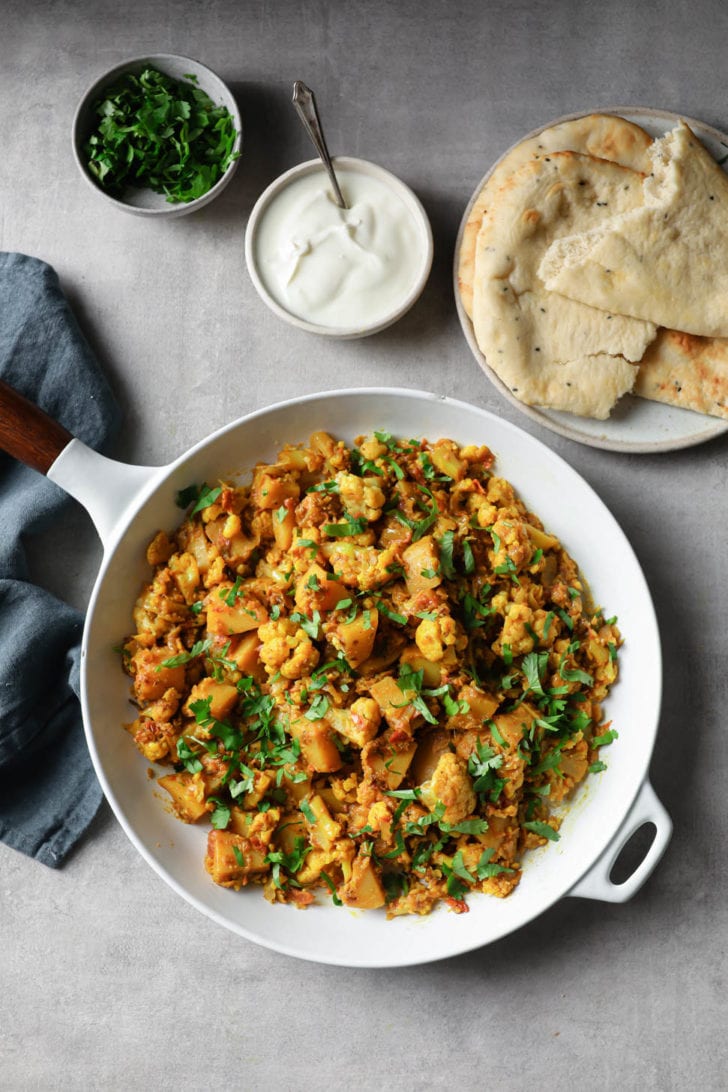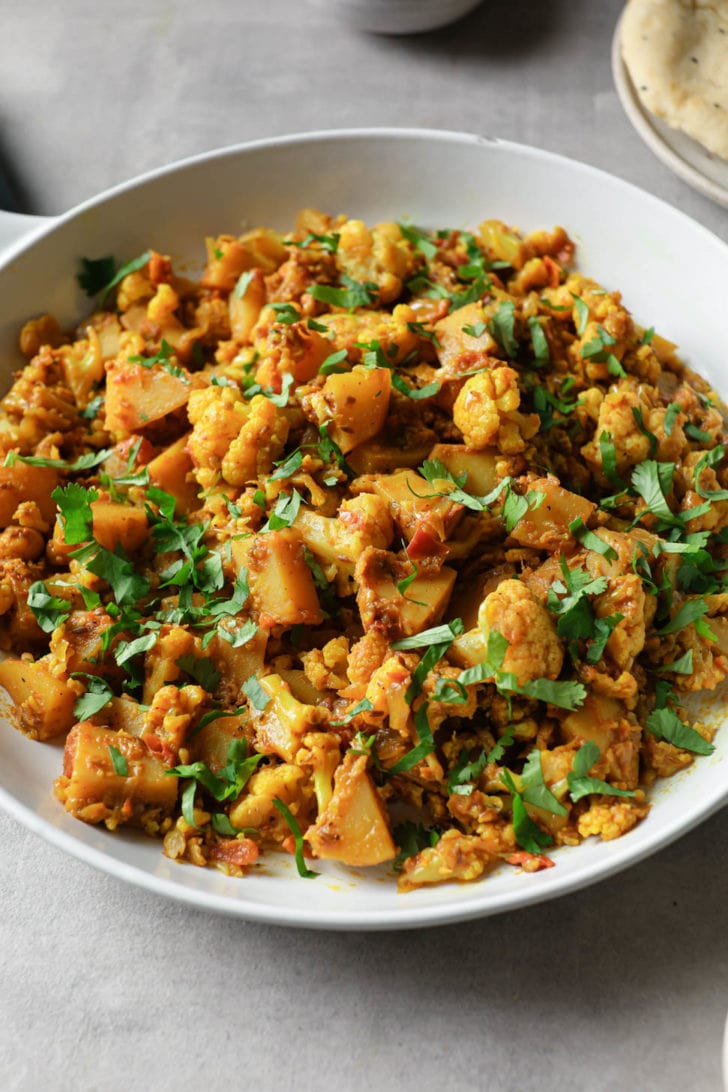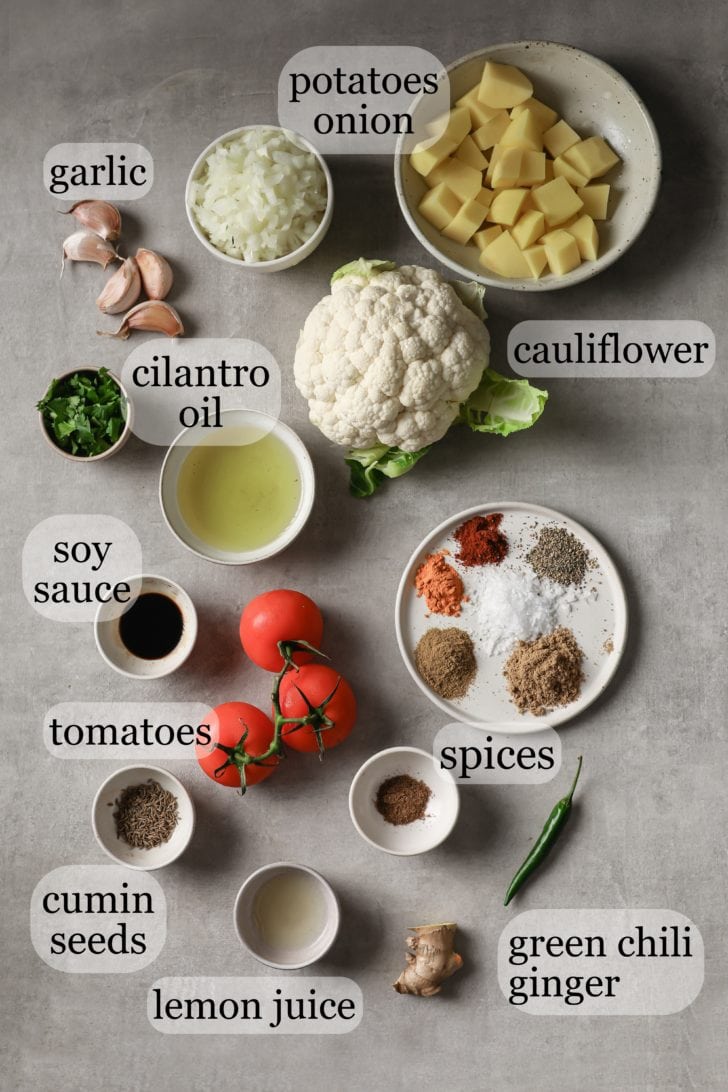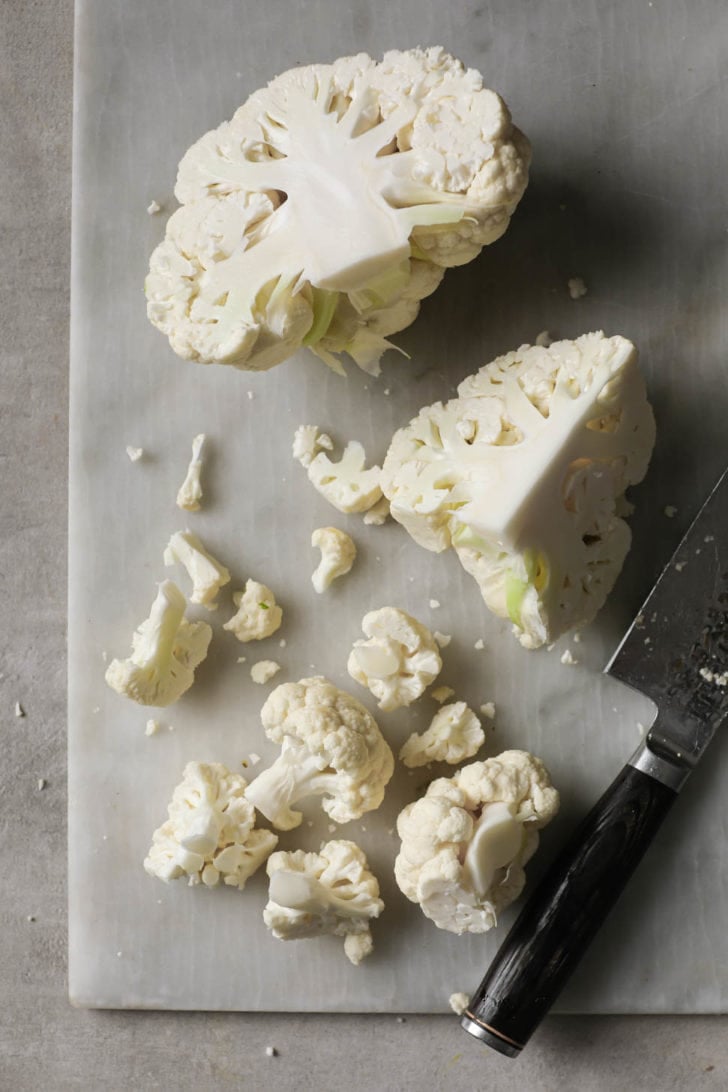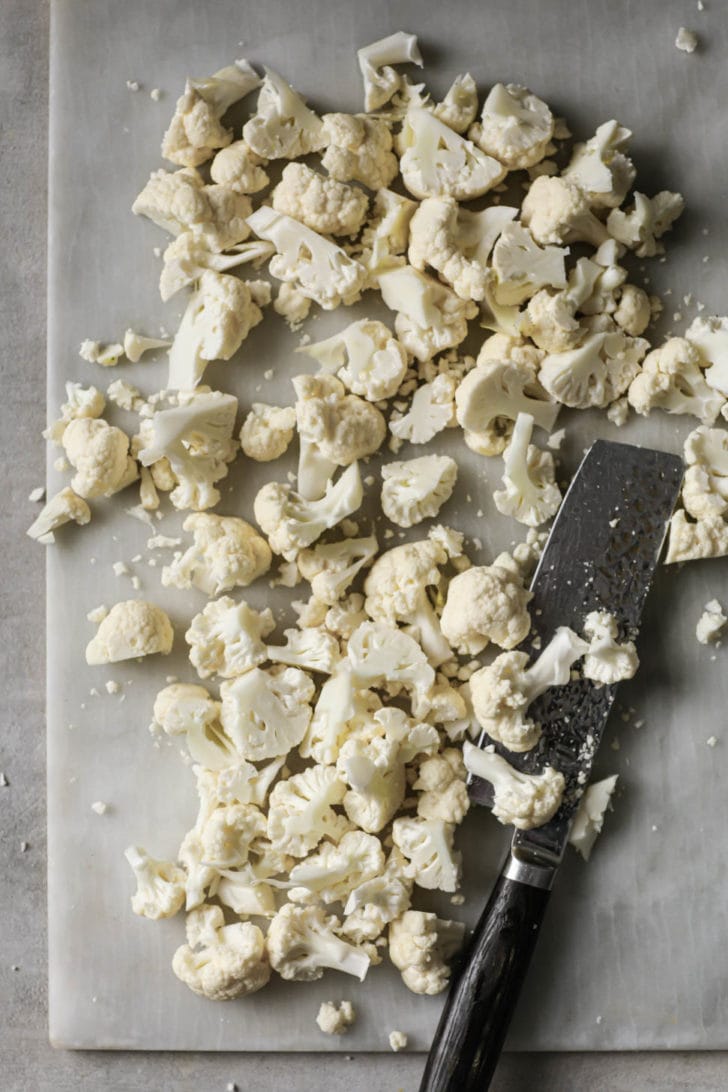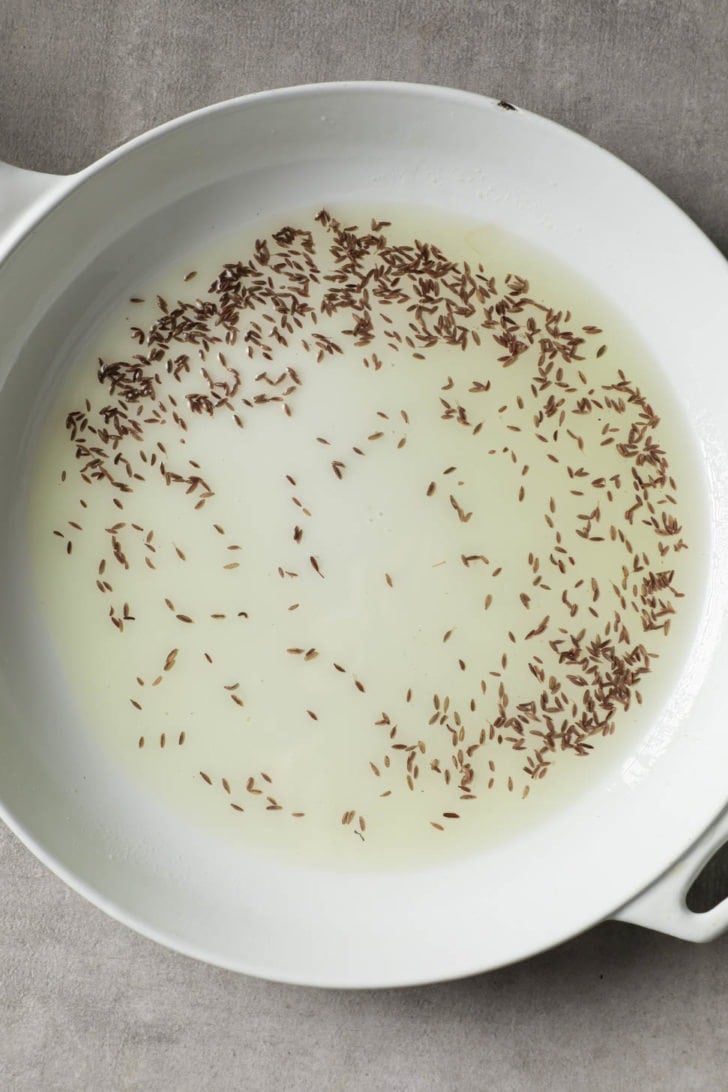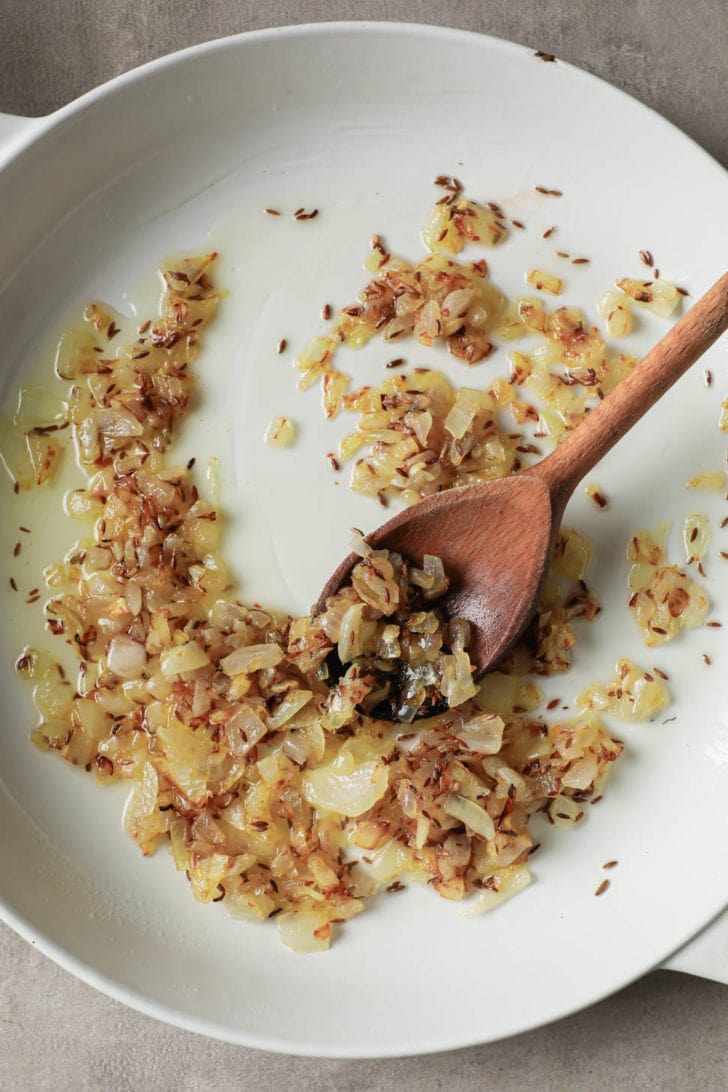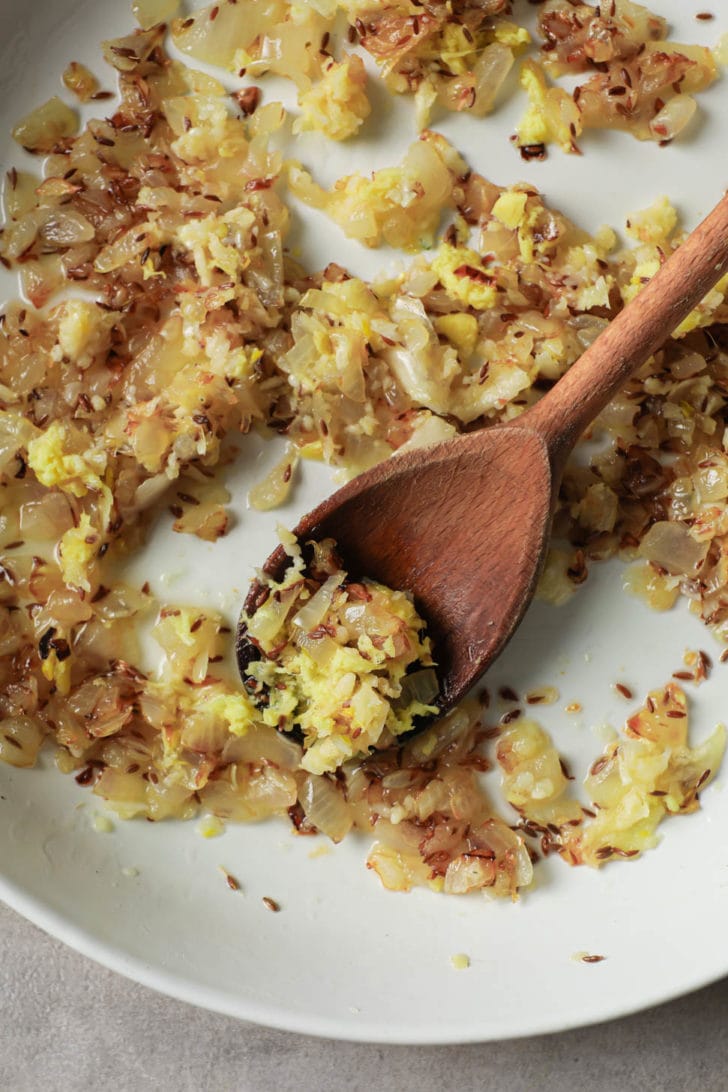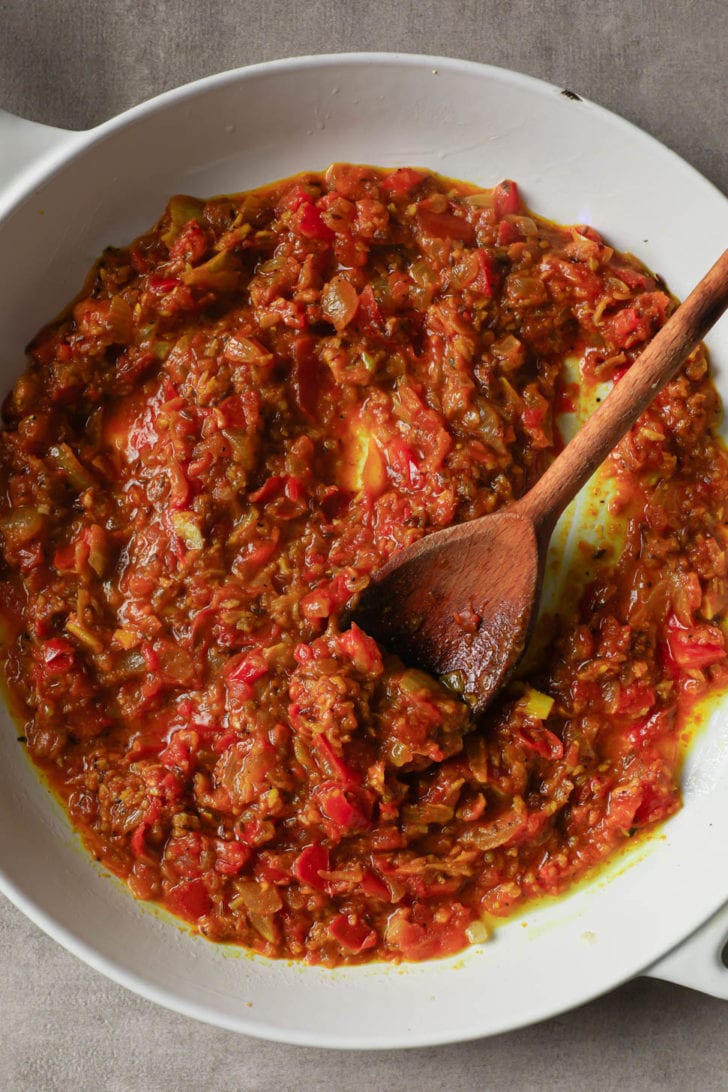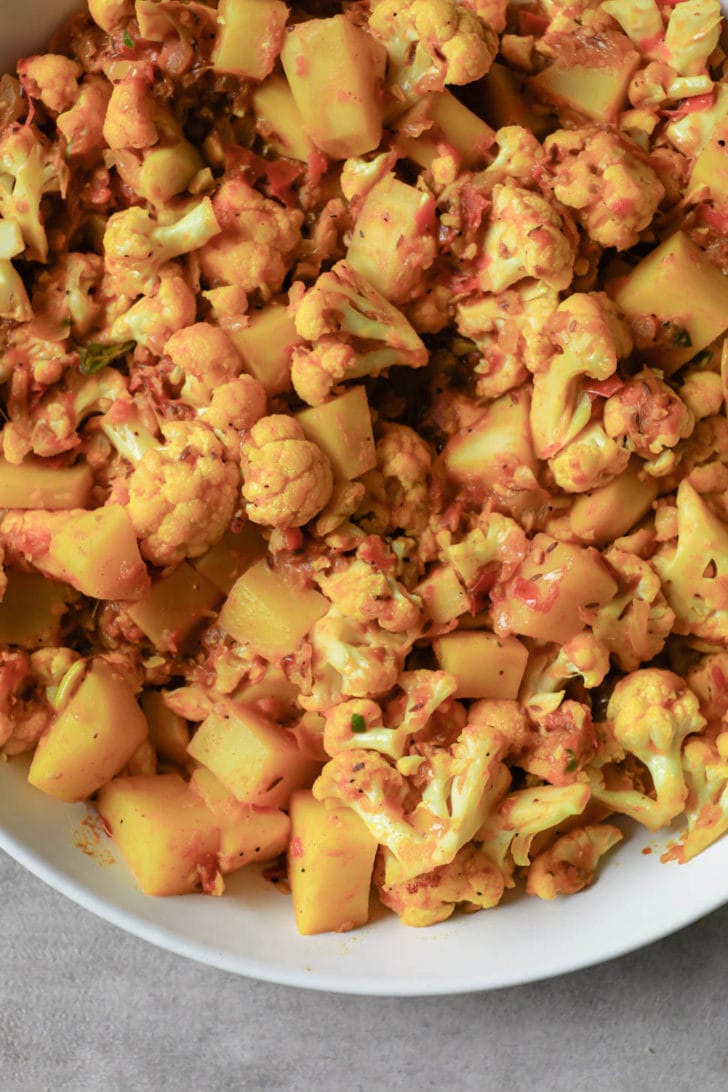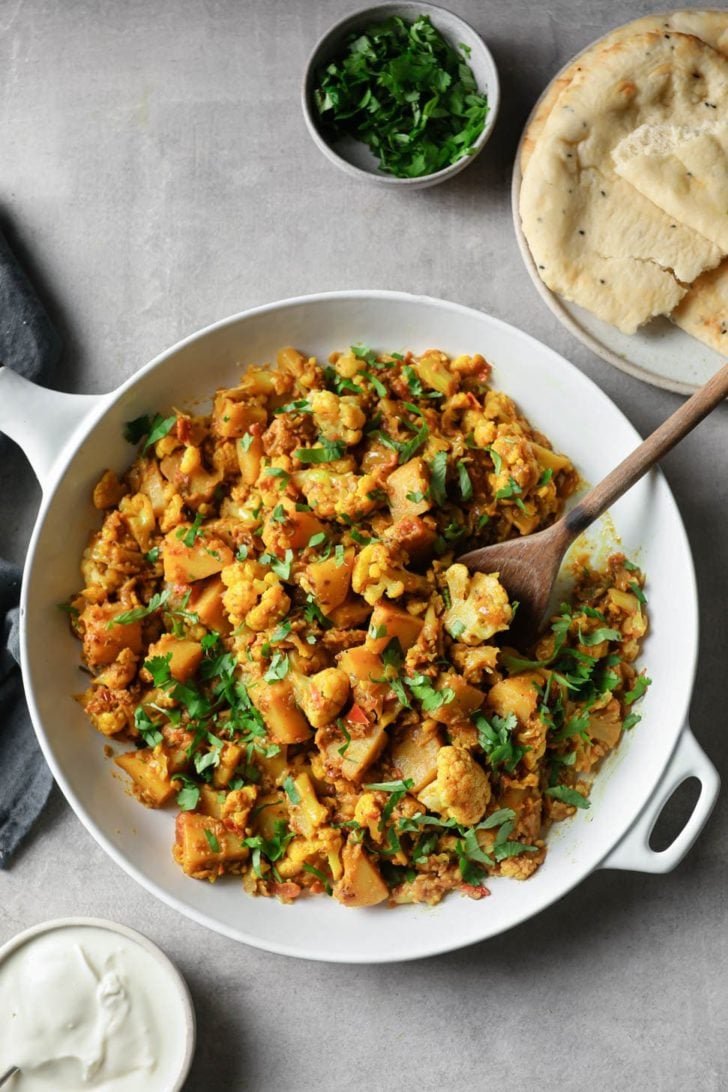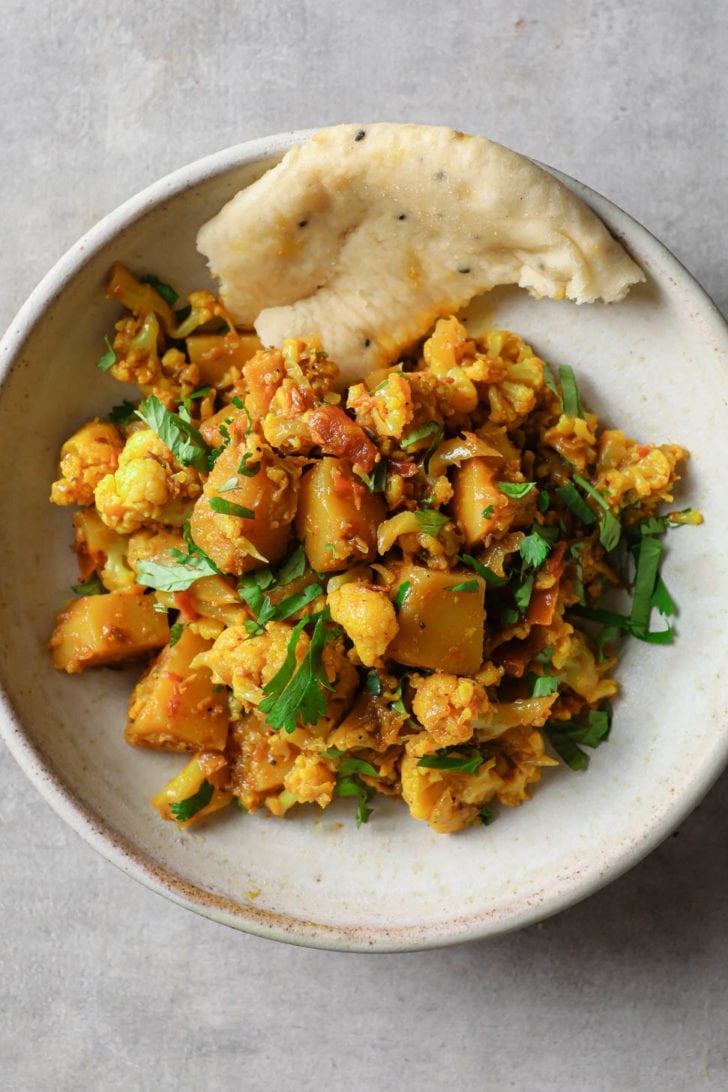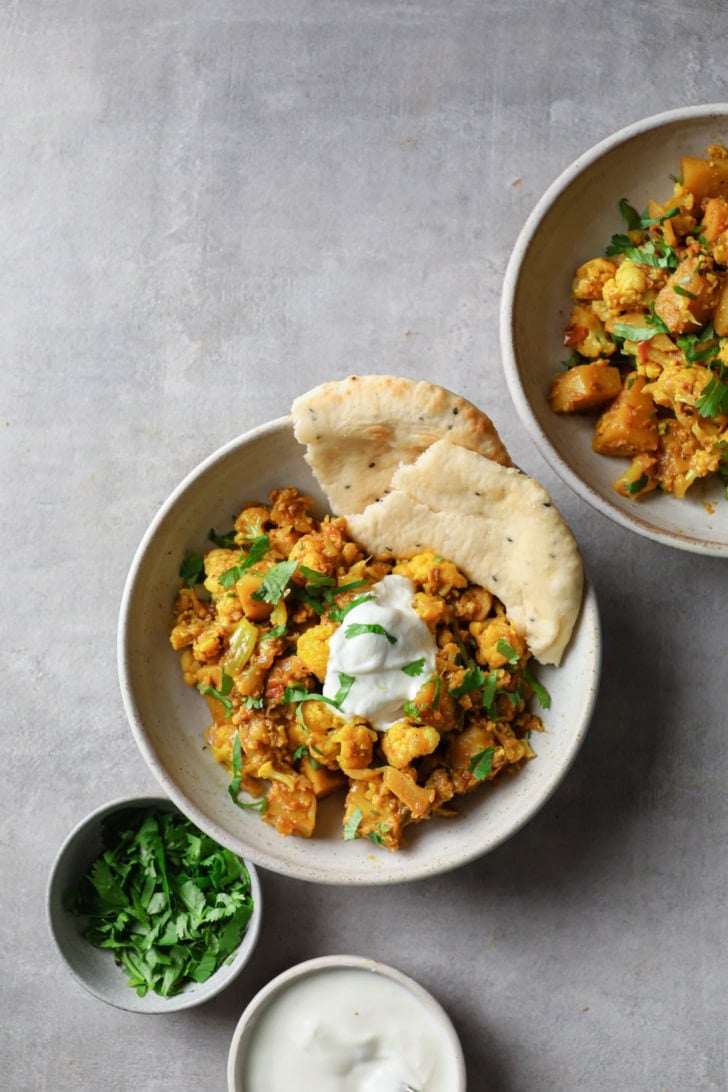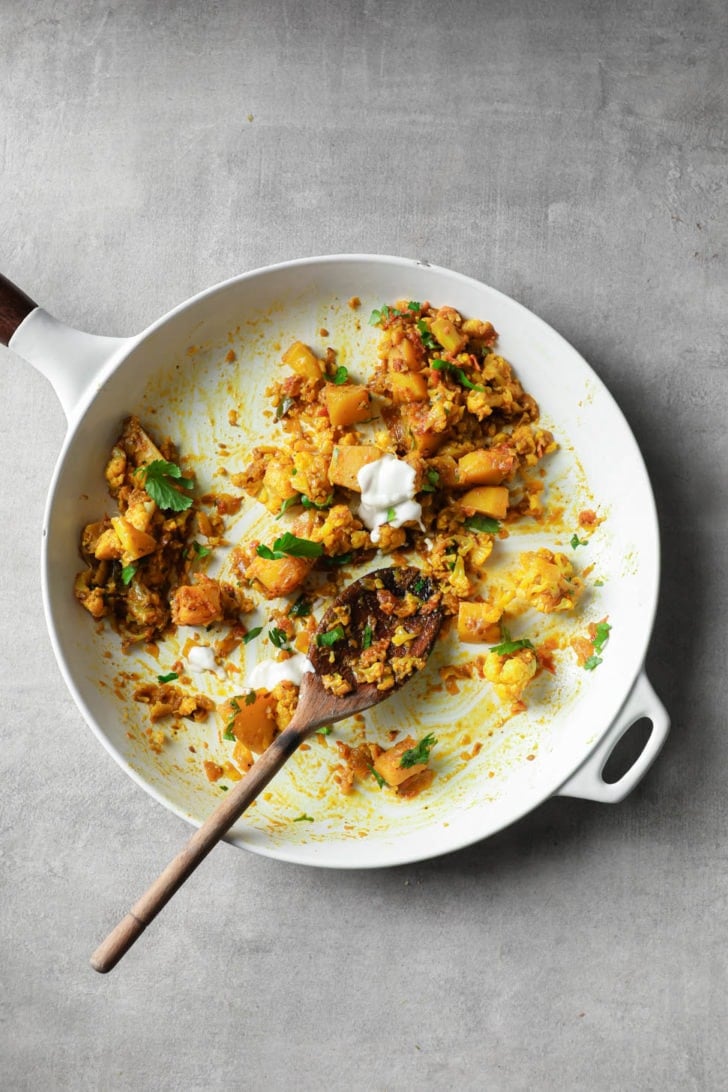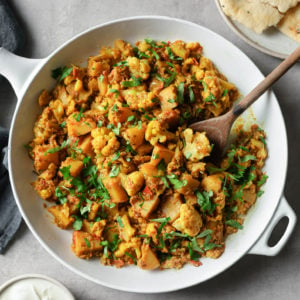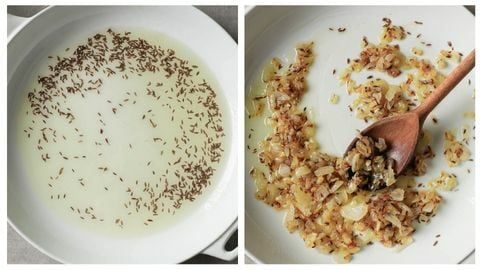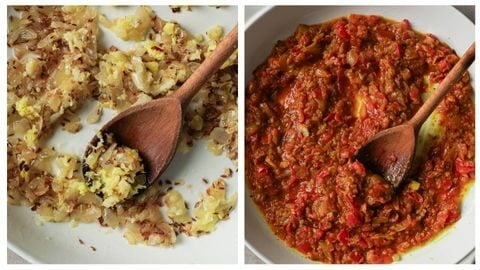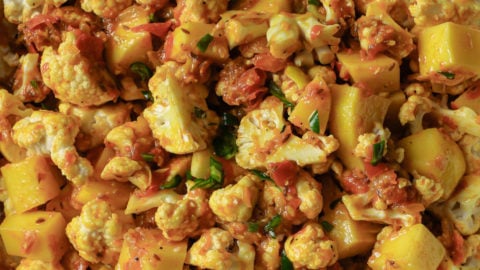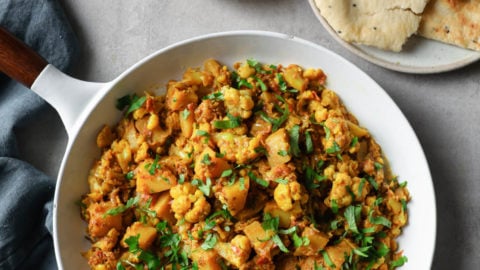Cauliflower & Potato Curry – Aloo Gobi
Aloo Gobi is a traditional dish in which potatoes (aloo) and cauliflower (gobi) are cooked in an onion-tomato masala (or simply, curry). Enter your email below and get it sent straight to your inbox. Plus, get recipes & tips every week! Cauliflower and potatoes are both flavor-absorbing vegetables (similar to zucchini), so it’s no surprise that they make an amazing curry. Aloo Gobi can be traced back to Punjab (a region in North India & Pakistan), and like many Punjabi dishes, it’s frequently found on restaurant menus.
Why this recipe?
I know, I know. There are as many versions of Aloo Gobi as there are South Asian households. You don’t need another Aloo Gobi recipe. But what if I told you I have a special one? Not only does this recipe use a key technique that’s crucial to getting the most flavor, but it also has a secret ingredient… More Restaurant Favorites: Butter Chicken, Rajma (Kidney Bean Curry), Matar Paneer
What’s the Secret Ingredient?
Now that I’ve built up all this suspense, I’ll keep you waiting for a liiittle longer. Your typical Aloo Gobi consists of all the usual suspects – onions, tomatoes, ginger, garlic, green chili pepper, spices, the works. While this recipe boasts all these traditional ingredients, it’s finished off with… Soy Sauce! (or Gluten-free soy sauce or Tamari) Now you might be thinking…soy sauce in a South Asian dish? You may be shaking your head. My ancestors may be frowning down upon me. But hear me out. The best way I can describe what soy sauce does is that it amplifies the umami factor of Aloo Gobi. If you aren’t familiar with the term ‘umami’, it’s basically called the “fifth taste,” after salty, sweet, sour, and bitter. It’s that deep, intense flavor that’s hard to describe but now that I pointed it out, you can already taste it. Key Technique – Sear & Steam: Restaurants often deep fry the potatoes and cauliflower before adding it to the pre-made curry base or masala. Here, the potatoes and cauliflower are pan-fried/sautéed (called bhunai) and then slowly steamed without any water (called dum). Adding water can lead to flavorless, soggy vegetables. Cooking the vegetables in their own moisture brings out their natural sugars, creating a more nuanced flavor and juicy texture.
Ingredients for Aloo Gobi
This recipe requires easy-to-find ingredients that are commonly used in South Asian cooking:
Oil: Practically any oil works here. Even olive oil should be fine. Cumin seeds: A staple whole spice in South Asian cuisine. Onion: I typically use yellow but red onion also works. Feel free to use the pulse function of your food processor to finely chop it. Garlic + ginger: You can use a mortar & pestle to crush them or throw them in a food processor to finely chop. Tomatoes: Both Roma and vine tomatoes work great here. Again, feel free to pulse to roughly chop in a food processor. Ground spice powders: You’ll need ground coriander, ground cumin, turmeric, black pepper, and red chili powder (or cayenne). Cauliflower: The recipe calls for a small head of cauliflower, which yields around 1 lb or 454g of cauliflower florets. See below on how to cut cauliflower for this curry. Potatoes: I use russet potatoes for their soft texture and quicker cooking time. If you choose a different variety, you may have to add/cook them before adding the cauliflower (similar to how Aloo Baingan cooks). Side note: If you love potatoes as much as I do, don’t miss this roundup of 10+ Aloo recipes. Green chili pepper: I typically use Thai (or bird’s eye) chili or half of a Serrano. Adjust this according to heat preference. Soy sauce: Gluten-free soy sauce, tamari, or any other substitute works here. This is not a traditional Aloo Gobi ingredient so I’ve left it optional. Garnish: Lemon or lime, garam masala, and chopped cilantro.
How to Cut Cauliflower for Curry:
To chop cauliflower into florets: Here’s a video showing how to cut cauliflower similar to how I’ve just described.
How to Make Aloo Gobi in 3 Easy Steps:
Step 1: Add the cumin seeds and onion and sauté until the onions turn golden. This is an essential component for forming the base (or masala) of many curries.
Step 2: Add the garlic and ginger and continue to saute so that the raw smell disappears and the onions deepen even more in color. Once the onions are deeply golden, add the tomatoes along with the spice powders and salt. (If you add the tomatoes too early, the acid in the tomatoes prevents the onions from browning well). Fully cook the tomatoes here until you can see the oil separating from the curry.
Step 3: Add the potatoes, cauliflower, and green chili pepper and stir-fry to soften. Cover and allow the vegetables to steam over low heat. After cooking, if there’s moisture from the vegetables left, sauté it out. If you find that the vegetables are sticking to the bottom of the pan, then deglaze with a splash of water. You want the vegetables to be extremely tender so that there’s no resistance as you scoop them up.
Garnish with soy sauce, garam masala, and lemon juice, and chopped cilantro.
Tips and Notes
Here are some more tips for making Aloo Gobi:
Variations
Aloo Gobi is a very flexible & versatile dish. I’ve tried and loved many variations. Here are some ideas:
Add 1/8-1/4 tsp dry mango (amchur) powder along with the other ground spices. An essential ingredient in chaat masala, this spice adds tang and is often used in Indian Aloo Gobi recipes. If you use this, you may want to omit or decrease the lemon juice. Sprinkle 1 tbsp dried fenugreek (sukhi or Kasuri methi) at the end (this is a must-have for Mixed Vegetable Curry) and mix to combine. Add 1/2 tsp nigella seeds (kalonji) along with the cumin seeds. These tiny black seeds are also used in my Gluten-free Naan and Achari Chicken recipe.
What to serve with Aloo Gobi
Cilantro Mint Chutney, Cucumber Raita, or plain yogurt go great with Aloo Gobi. Like most curries with drier consistencies, Aloo Gobi is usually served with roti, naan, or other bread. You can also pair with rice, serve it in a wrap, make tacos with it, use as a filling for parathas, and so much more! If you are looking to pair Aloo Gobi with a protein, it would go great with Keema Matar along with either naan or rice.
How to Store and Reheat Aloo Gobi
Aloo Gobi keeps well in the fridge in an airtight container for 3-4 days. I wouldn’t recommend freezing it as I find the cubed potatoes lose taste and texture after being thawed.
More Vegan and Vegetarian curry recipes:
Chana Masala – (Authentic Chickpea Curry) Aloo Palak (Spinach & Potato Curry) Zucchini/Courgette Curry (Toriyan) Okra Curry (Bhindi) Smoked Eggplant Curry (Baingan Bharta)
Tried this recipe? If you have a minute, please consider leaving a comment telling me how it was! You can also take a quick picture and upload it directly into the comments. If you’re on Instagram, please tag me so I can see your creations. I truly love hearing from you. Thank you!
